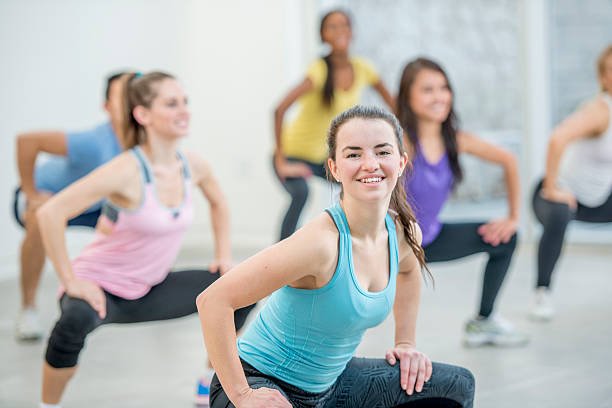Fitness A Pathway to a Healthier Happier Life
Fitness is more than just a trend or a short-term goal; it is a lifelong commitment to physical and mental well-being. In a world where sedentary lifestyles and unhealthy eating habits have become common, prioritizing fitness is crucial for maintaining overall health and preventing chronic diseases. Whether you are a beginner or someone looking to level up your current fitness routine, understanding the basics of fitness and its benefits can empower you to live your best life.
Fitness
Fitness refers to the ability of the body to perform daily tasks efficiently and effectively without undue fatigue. It encompasses several components, including:
-
Cardiovascular endurance – The ability of the heart and lungs to work together during sustained physical activity.
-
Muscular strength – The power your muscles can exert in a single effort.
-
Muscular endurance – The ability of muscles to perform repetitive movements over time.
-
Flexibility – The range of motion around your joints.
-
Body composition – The ratio of fat to lean mass in your body.
A well-rounded fitness routine targets all of these elements, promoting a balanced and healthy body.
Fitness Important
1. Physical Health
Regular exercise reduces the risk of numerous health issues such as heart disease, type 2 diabetes, obesity, high blood pressure, and some types of cancer. It also strengthens the immune system and enhances respiratory and cardiovascular functions.
2. Mental Health
Exercise has a profound impact on mental health. It releases endorphins, the body’s natural mood elevators, which help combat stress, anxiety, and depression. Regular physical activity also improves sleep patterns and boosts self-confidence.
3. Energy and Productivity
Engaging in regular fitness activities increases energy levels and reduces fatigue. People who exercise regularly often report higher productivity and better focus, both at work and in daily life.
4. Longevity
Studies have shown that physically active individuals tend to live longer and have a lower risk of dying prematurely. Fitness promotes a quality life even in older age by maintaining mobility and independence.
Common Fitness Myths
There are a lot of misconceptions about fitness that can hinder your progress:
-
Myth: You need to work out for hours.
Truth: Even 20–30 minutes a day of moderate exercise can make a big difference. -
Myth: Weight training makes women bulky.
Truth: It actually helps tone the body and boost metabolism without adding bulk. -
Myth: No pain, no gain.
Truth: Some muscle soreness is normal, but sharp or intense pain is a red flag. -
Myth: You can spot reduce fat.
Truth: Fat loss happens all over the body, not just in one area.
Staying Motivated
Motivation can wane, especially in the early stages. Here’s how to stay on track:
-
Find a workout buddy or join a group class.
-
Track your progress with a fitness journal or app.
-
Reward yourself for reaching milestones.
-
Change your routine to keep it fresh and exciting.
-
Remember why you started—write it down and revisit it often.
Types of Fitness Activities
Fitness is not limited to lifting weights or running miles. There are numerous ways to stay fit, and finding an activity you enjoy is key to long-term success.
1. Aerobic Exercises
Also known as cardio, these include walking, jogging, swimming, cycling, and dancing. They improve heart health, endurance, and help in burning calories.
2. Strength Training
This includes weightlifting, resistance band workouts, or bodyweight exercises like push-ups and squats. Strength training increases muscle mass, strengthens bones, and boosts metabolism.
3. Flexibility and Balance Exercises
Yoga, stretching routines, and tai chi fall into this category. These exercises enhance flexibility, reduce injury risk, and improve posture and balance.
4. High-Intensity Interval Training (HIIT)
HIIT combines short bursts of intense activity with periods of rest. It is efficient, time-saving, and effective for both fat loss and cardiovascular improvement.
Creating a Fitness Plan
1. Set Clear Goals
Do you want to lose weight, build muscle, improve endurance, or just stay active? Defining your goals helps determine the type of fitness routine you should follow.
2. Start Slowly
If you’re new to fitness, ease into your routine to avoid injury and burnout. Begin with short workouts and gradually increase intensity and duration.
3. Stay Consistent
Fitness is a long-term journey. Consistency is key. Aim for at least 150 minutes of moderate aerobic activity or 75 minutes of vigorous activity each week, as recommended by health experts.
4. Mix It Up
Avoid monotony by trying different activities. This keeps workouts fun and targets different muscle groups, promoting overall fitness.
5. Listen to Your Body
Rest is just as important as exercise. Give your body time to recover to prevent fatigue and injuries.
Nutrition and Hydration
Exercise alone is not enough. Proper nutrition fuels your workouts and aids recovery. Focus on a balanced diet that includes:
-
Lean proteins for muscle repair.
-
Complex carbohydrates for energy.
-
Healthy fats for overall health.
-
Fruits and vegetables for vitamins and minerals.
-
Plenty of water to stay hydrated and support metabolic functions.
Avoid processed foods, excessive sugar, and empty calories. Eating right complements your fitness efforts and helps you reach your goals faster.
Fitness at Any Age
Fitness is not just for young people or athletes. People of all ages can benefit from regular physical activity:
-
Children and teens – Promotes growth, coordination, and lifelong healthy habits.
-
Adults – Maintains body weight, reduces health risks, and improves quality of life.
-
Seniors – Enhances mobility, reduces fall risk, and boosts mood and mental sharpness.
Overcoming Barriers to Fitness
Many people struggle with starting or sticking to a fitness routine due to time constraints, lack of motivation, or fear of failure. Here are some tips to stay on track:
-
Schedule workouts like appointments.
-
Find a workout buddy for accountability.
-
Use fitness apps or join a class to stay engaged.
-
Celebrate small victories to stay motivated.
-
Don’t compare yourself to others—your journey is your own.
Conclusion
Fitness is not just about appearance; it is about living a full, vibrant, and energized life. By incorporating regular physical activity, proper nutrition, and a positive mindset, you can unlock the door to a healthier and more fulfilling future. The journey may not always be easy, but the rewards are well worth the effort. Start small, stay consistent, and remember: every step you take towards fitness is a step toward a better you.






